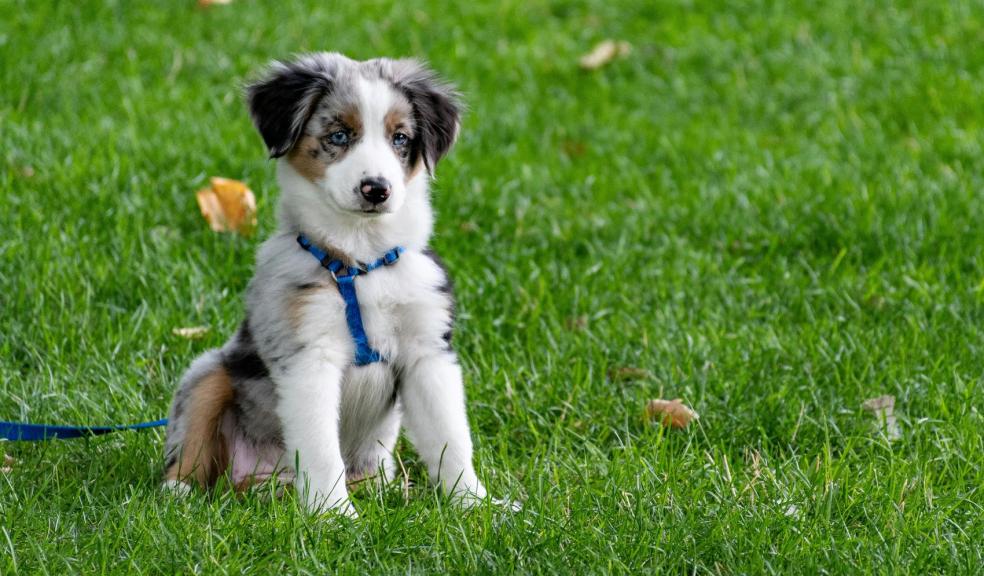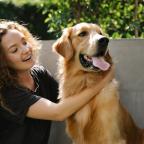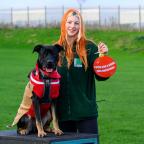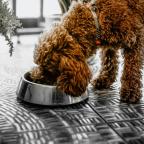
Pandemic pooches are TWICE as anxious as other dogs: Puppies bought during Covid more nervous of new people, places and pets
Covid has created a nation of anxious dogs with pandemic pooches more nervous of new people, places and other pets than those bought before or after the lockdowns.
Some 5.4 million pets were welcomed into UK homes during the Covid-19 pandemic, though as many as three million were later given up. Now - three years after the final lockdown lifted on July 19, 2021 - new research by Burns Pet Nutrition reveals that puppies bought during the pandemic are displaying greater levels of anxiety compared to dogs adopted before or after the crisis.
More than two-fifths (44%) of owners say their pandemic pooch is nervous around strangers, compared to less than a quarter (23%) of other dogs. Nearly a third (31%) of owners also say their Covid canine is nervous around other pets, compared to around a fifth (22%) of other dogs. And, nearly a fifth (18%) of lockdown pooches are nervous around children, compared to just one in 10 other dogs.
The critical 'window' for socialisation of a new puppy is within the first three to 12 weeks of its life. Despite this, the data suggests thousands of pandemic pooches missed out.
A quarter of lockdown owners (25%) said it was up to three months before their pandemic puppy met another pooch or person, compared to 19% bought outside of lockdown. And, only two in 10 lockdown puppies (20%) came into daily contact with another dog or person, compared to nearly a third (29%) of other dogs.
Although owners spent more time with their new pets, lockdowns appear to have driven a rise in dependency from dogs towards their owners. Less than a third (29%) of Covid canines can be left alone in the home while their owners are at work, compared to more than a third (34%) of normal dogs.
Laura Crotch Harvey, Nutrition Manager at Burns Pet Nutrition said: "Socialising your puppy in their early life should be an absolute priority if you want a companion that can happily integrate with other pets and people. During this pivotal three-month period, exposing your pup to new faces and places will help reduce their fear and anxiety in later life. Socialisation is a huge benefit to pet parents too, it allows them to confidently mingle with other dog owners and gives them peace of mind that their four-legged friend is happy and not stressed when they're not by your side."
Top Five tips for behavioural training:
- Reward them - Give your dog a treat or a good pet to reward positive signs of behaviour so they learn exactly what it is that you want to see from them
- Avoid distractions - Concentration is key for dogs to get over anxieties, this is why when on walks or in social settings it is important to allow them to focus only on what it is that you are trying to improve about their behaviour
- Be consistent - Training a dog can be hard and it won't happen overnight, this is why it is crucial not to give up and ensure that you are regularly allowing time to train them
- Be patient - Training your dog may be one of the most frustrating tasks you've ever embraced, but don't worry patience is key and all dogs have differing levels of time it will take to make progress but if you give them that time, you'll see the rewards
- Don't overwhelm them - Training your dog should be enjoyable for you both, no matter how long it takes. Often short lessons are the most effective for your dog to learn, I would advise an average lesson to be around five to ten minutes in length to see the best reactions from your dog
Case study
Samantha Henry, founder of Pup Chic Boutique said: "I have three toy poodles, one of which, Villanelle, I got during the first lockdown. While they are generally a needy breed, Villanelle certainly has heightened anxiety compared to the other two.
"When I leave the house, she is the only one that cries. On walks, she is the most nervous if other dogs come running up to her, and she is the only one that doesn't settle in the car.
"I've always tried to socialise my dogs as much as possible when they were puppies, but with Villanelle I was at home with her all the time, so I never left her. Nor I did commute with her to work either. When I walked her during the lockdowns, we rarely saw other dogs and of course we had to socially distance from other people. All of these factors meant her socialisation was minimal and it's had a big impact on her stress and neediness levels today."







